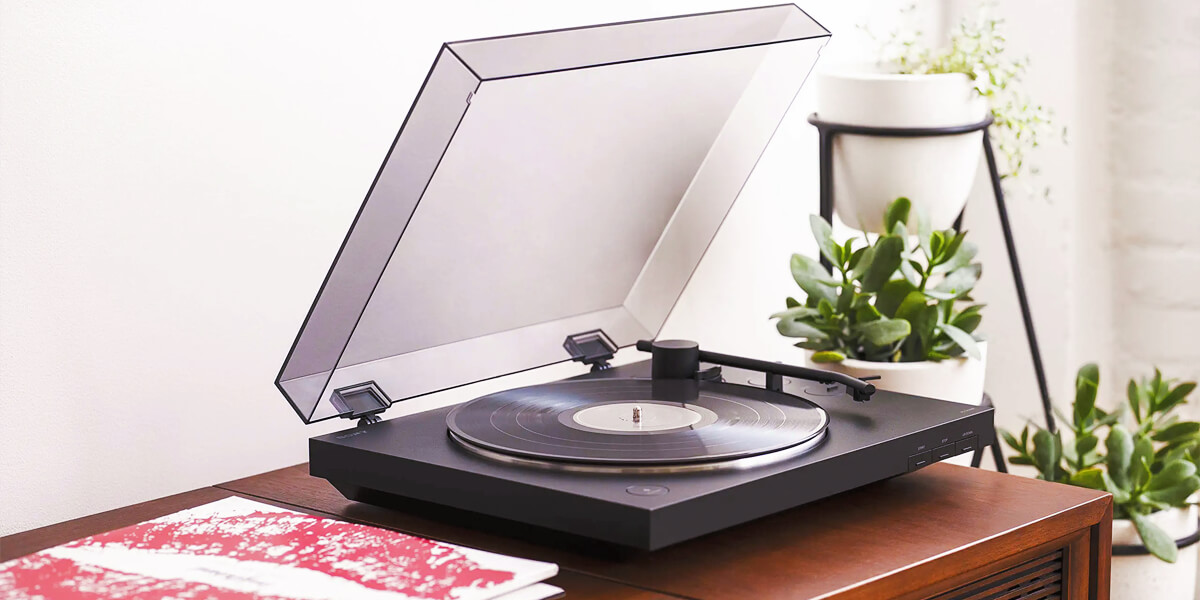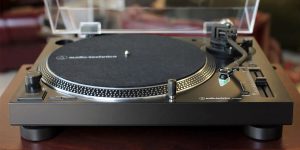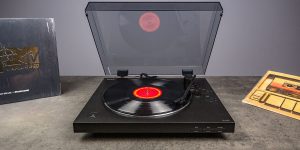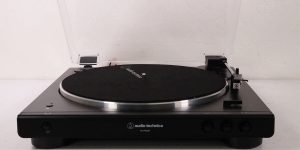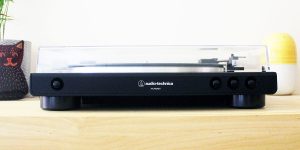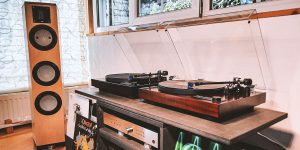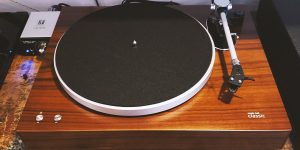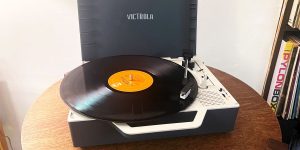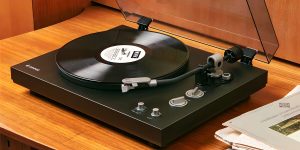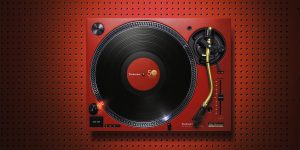Welcome to my guide on vinyl players, where I’m going to compare two distinctive drive systems: belt-drive vs. direct-drive turntable. If you’re a music enthusiast or a vinyl fan, you’ve likely come across these terms but may still be uncertain about their nuances and which one suits your needs the most. I’m here to demystify these drive systems, explore their unique features, weigh the pros and cons, and ultimately help you make a decision when it comes to choosing the perfect vinyl player. So, let’s discover which drive system resonates harmoniously with your musical desires.
Belt-drive turntables
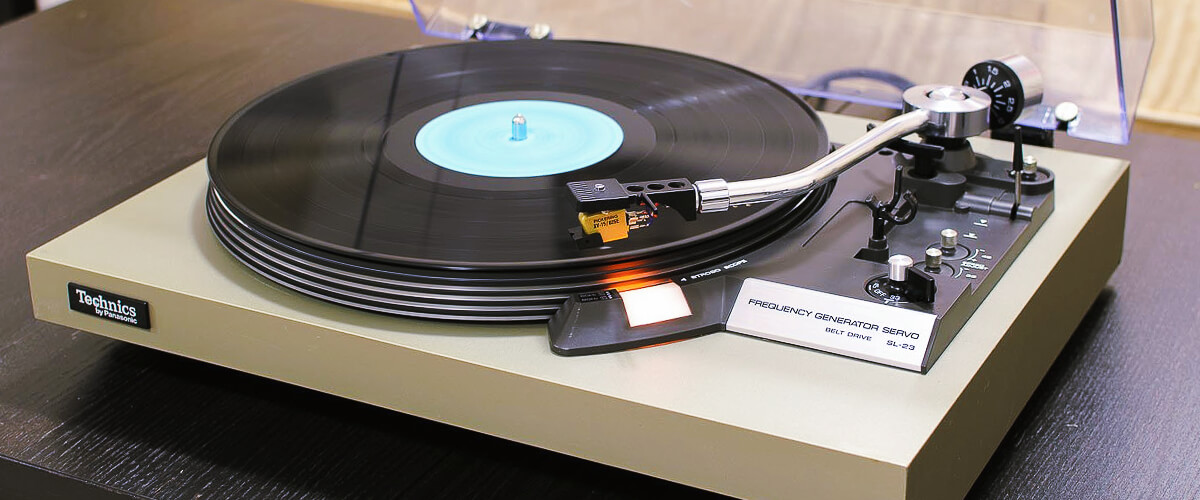
These turntables utilize a rubber belt to connect the motor to the platter, where the vinyl record is placed. Belt-drive systems excel in reproducing high-fidelity sound. They have good speed consistency, ensuring accurate playback. Besides, the belt acts as a shock absorber, protecting delicate components from excessive strain.
Pros of belt-drive turntables
Reduced vibration and better sound quality
The separation of the motor from the platter in a belt-driven turntable significantly reduces vibration and mechanical noise. This isolation leads to improved sound quality, allowing for more accurate music reproduction.
Easy maintenance and replacement
The rubber belt connecting the motor to the platter can be replaced if necessary without requiring complex adjustments or technical expertise.
Affordable options available
The availability of affordable belt-drive turntables allows for a more budget-friendly entry point into the world of vinyl playback. Many well-known brands such as Pioneer, Sony, and others offer quite affordable models.
Cons of belt-drive turntables
While a turntable with a drive belt offers numerous advantages, it’s important to consider potential drawbacks as well.
Slower start-up and speed adjustment
Belt-drive turntables rely on the belt’s tension to transfer power from the motor to the platter, which can introduce limitations in motor torque and result in slower startup times. Achieving precise speed can involve manually adjusting the belt tension or using a speed calibration tool.
Belt wear and eventual replacement
The rubber belt is subject to wear and tear over time. Therefore, it may eventually need to be replaced to ensure optimal performance.
Less suited for DJing and scratching
The belt mechanism introduces a slight delay in reaching the desired speed, which can affect the precision and timing required for DJing and scratching techniques. Also, they may have anti-skate adjustment and tracking force control limitations.
Direct-drive record players
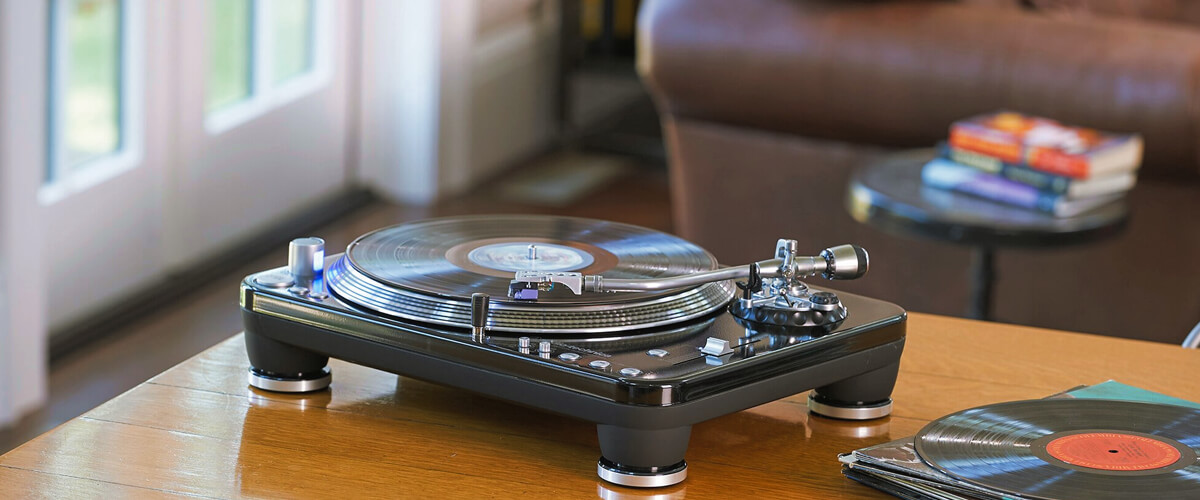
This type of record player has gained popularity among DJs and music enthusiasts for their performance features. Direct-drive turntables are known for their high torque motors, which deliver strong rotational force to the platter. This high torque enables faster acceleration and deceleration, ensuring a quick response to manual adjustments. Many direct-drive turntables offer the ability to play records in reverse. Generally, they require less maintenance, offering convenience and ease of use.
Pros of direct-drive record players
Faster start-up and accurate speed control
Direct-drive turntables excel in maintaining stable and accurate rotational speed. The direct connection between the motor and the platter allows quick start-up times and consistent rotation.
Greater durability and stability
Their solid construction and robust components can withstand the demands of professional use, making them suitable for those who require turntables that can handle intensive scratching and extended use.
Ideal for DJing and professional use
They often come equipped with features specifically designed for DJ performance, like adjustable pitch range, removable and adjustable tonearms, integrated DJ-oriented controls and interfaces, and compatibility with DJ software and digital systems.
Cons of direct-drive record players
Potential for increased vibration and noise
Direct-drive turntables can be more prone to transmitting motor vibrations and mechanical noise to the platter and the stylus, affecting the overall sound quality.
Higher price range
The advanced technology, high-torque motors, and additional features of direct-drive turntables contribute to their higher price point.
More complex maintenance and repairs
They often have more intricate internal mechanisms and components, making maintenance and repairs more complex, which may require professional assistance.
Selecting the right turntable for you
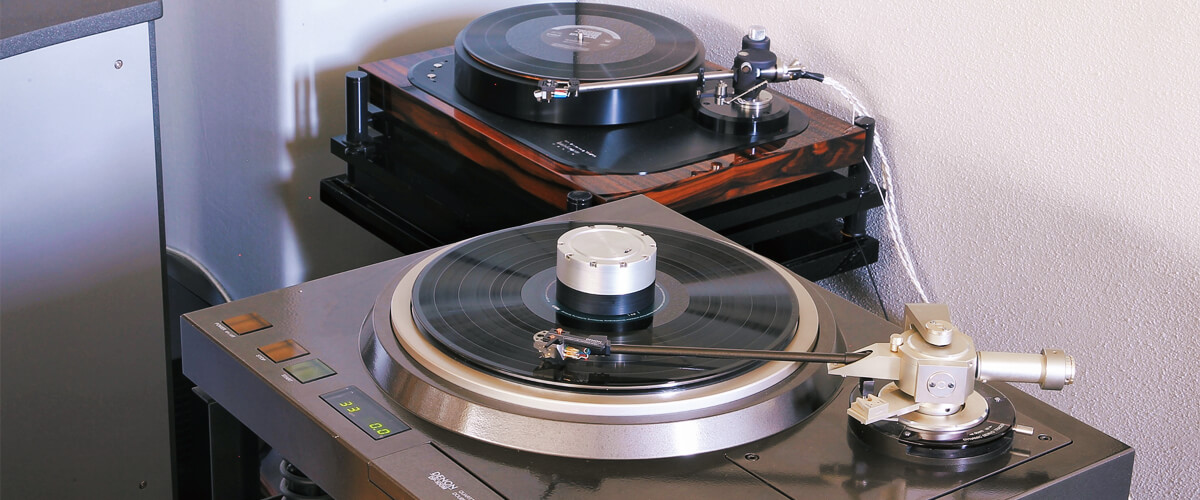
Assessing your needs and intended use
With a wide range of options available, it’s important to consider several factors to ensure that the turntable aligns with your preferences, budget, and specific requirements.
Evaluating your budget
When considering turntables, price range is an important aspect to take into account. Belt-drive turntables offer more affordable options. Entry-level can be found in the range of $100 to $300. These models offer basic functionality for casual listening. Mid-range turntables typically fall within $300 to $800.
Direct-drive turntables come at a higher price. Beginners can find them for around $200 and up to $500. Turntables with improved components generally fall within the rate of $500 to $1,000 and even higher.
It’s important to look beyond just the initial cost, and long-term maintenance expenses should also be considered. Both turntables may require maintenance and occasional component replacements over time.
Belt-drive turntables may need belt replacement after several years of use, which is a low-cost maintenance task. As for direct-drive turntables, it can be rather expensive if any components, like the motor or electronic parts, require repair or replacement.
Prioritizing sound quality and performance
The drive system of a turntable plays a significant role in its overall sound quality. Both turntables have their own characteristics when it comes to the next three aspects:
| Type | Vibration Reduction | Pitch Stability | Noise Levels |
|---|---|---|---|
| Belt-Drive | Reduce vibration and motor noise due to the belt acting as a buffer between the motor and the platter. | Sometimes exhibit slight variations in pitch stability due to the elasticity of the belt. | Operate quietly due to the motor’s isolation from the platter. |
| Direct-Drive | The direct connection between the motor and the platter allows for better control of vibrations, resulting in reduced resonance and improved sound quality. | Maintain pitch stability. | Produce slightly more motor noise due to the direct motor coupling. |
Factors like the quality of components (cartridge, tonearm, etc.), build quality, and isolation from external vibrations can greatly impact the audio performance. High-quality components and effective isolation mechanisms help minimize interference and enhance sound reproduction.
I recommend looking for turntables with solid construction and features contributing to vibration reduction and isolation from external disturbances. Additionally, factors like the phono preamp, stylus quality, and the condition of your vinyl records also play a role in sound reproduction.
Considering durability and maintenance requirements
Understanding the difference between direct-drive and belt-drive maintenance tasks and durability will help you to choose the right device.
| Type | Maintenance | Durability |
|---|---|---|
| Belt-Drive | Require more frequent maintenance compared to direct-drive models. Regular cleaning of the belt and pulley is recommended to prevent any debris buildup that could affect performance. | The absence of a direct motor connection reduces the risk of motor-related issues. However, the belt may wear out over time, requiring periodic replacement. |
| Direct-Drive | Require less frequent maintenance. Have more complex internal mechanisms and electronics that may require professional assistance. | Have a robust construction and can withstand heavy usage, offering prolonged durability. |
Ultimately, the choice between a belt-drive and direct-drive turntable comes down to your preferences, influenced by your listening style, intended use, and budget. Make sure you consider factors that contribute to sound quality as well as how easy or difficult its maintenance will be.

